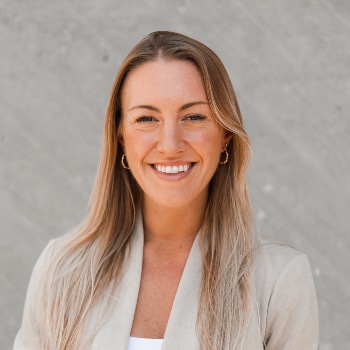Dual Diagnosis - SUD, BD, and BPD
Overcoming an addiction–to alcohol or another drug–is extremely challenging. And struggling with a mental health disorder is also very challenging. For people living with both substance use and mental health disorders, the challenges can become much greater.
Our providers may offer co-occurring disorder treatment to people struggling with mental health disorders as well as secondary substance use disorders. Using traditional as well as holistic healing methods, their teams help people struggling with dual-diagnosis conditions regain their health and well-being.
This guide will explore three different types of dual diagnosis: substance use disorder and bipolar disorder; substance use disorder and borderline personality disorder; and bipolar disorder and borderline personality disorder.
What Is Dual Diagnosis?
Types of Dual Diagnosis
While this list provides three examples of a dual diagnosis, it is not a comprehensive representation of all possible combinations of dual diagnosis. These are the three that we will be exploring in this guide:
1. Dual diagnosis of substance use disorder and bipolar disorder
Individuals with co-occurring SUD and BD may experience periods of mania, depression, and/or mixed episodes, as well as symptoms of SUD.
2. Dual diagnosis of substance use disorder and borderline personality disorder
People with these co-occurring disorders may experience symptoms such as emotional dysregulation, unstable relationships, and self-destructive behavior in addition to the symptoms of SUD. The presence of both disorders can complicate treatment, and specialized care may be necessary to address the complex needs of the patient.
3. Dual diagnosis of bipolar disorder and borderline personality disorder
This condition, often abbreviated as BD/BPD, can result in a range of symptoms such as mania, depression, unstable relationships, emotional dysregulation, and self-destructive behaviors.
Substance Use Disorder
A substance use disorder is the official term for drug addiction. Alcohol use disorder is one type of substance use disorder. Tobacco, cannabis and other hallucinogens, heroin and other opioids, cocaine and other stimulants, and benzodiazepines and other sedatives are examples of substances that a person can develop a physiological or psychological dependence on.
Signs and Symptoms of Substance Use Disorder
The signs and symptoms of substance use disorder vary depending on the type and amount of substance used, as well as the duration and frequency of use, but may include but are not limited to: 2
- Significant impairment or distress in functioning
- Increased tolerance and/or withdrawal symptoms
- Inability to control use
- Changes in personality
- Health, financial, legal, or relationship problems related to substance use
Bipolar Disorder
Bipolar disorder is a serious mental health disorder belonging to the category of mood disorders.
Signs and Symptoms of Bipolar Disorder
The signs and symptoms of bipolar disorder vary depending on the individual but may include but are not limited to:3
- Rapid and extreme changes in mood
- Increased or decreased energy levels
- Difficulty sleeping or sleeping too much
- Difficulty with concentration
Causes and Risk Factors for Bipolar Disorder
The causes and risk factors of bipolar disorder vary depending on the individual but can include but are not limited to the following:
- Genetics
- Brain chemistry
- Hormonal changes
- Stressful life events
- Substance use
Borderline Personality Disorder
Borderline personality disorder is a serious mental health disorder that belongs to the category of personality disorders.
Signs and Symptoms of BPD
The signs and symptoms of borderline personality disorder (BPD) vary depending on the individual but may include but are not limited to: 4
- Overly intense emotions
- Fear of abandonment
- Unstable relationships
- Impulsive behaviors
- Self-destructive behaviors
Causes and Risk Factors for BPD
The causes and risk factors of Borderline Personality Disorder (BPD) vary depending on the individual but can include but are not limited to the following:
- Genetic factors
- Brain chemistry
- Trauma
- Relationship issues
- Emotional regulation difficulties
Bipolar Disorder vs. Borderline Personality Disorder
The major difference between bipolar disorder and borderline personality disorder is that bipolar disorder is a mood disorder while borderline personality disorder is a personality disorder. Mood disorders are a category of disorders distinguished by serious changes in mood. Along with bipolar disorder, depression is also a kind of mood disorder. 6
Personality disorders are characterized by ways of thinking, feeling, and behaving that are markedly different from social expectations. Individuals with personality disorders have difficulty perceiving and relating to other people and situations. These behaviors often disrupt their personal, professional, and social lives. 7
Challenges of Dual Diagnosis
Co-occurring substance use and mental health disorders are challenging in many ways. They are challenging for the people living with these conditions, for loved ones who are trying to help, and for mental health professionals who aspire to create the most effective treatment plan.
Social and Interpersonal Challenges
Living with a dual diagnosis can be isolating, as individuals may feel unable to relate to their peers and form meaningful connections with others. In addition, people with dual diagnosis often find that their mental health and substance use can cause them to be embarrassed, ashamed, or fearful of judgment from others, making it difficult to reach out for help or support.
Treatment Challenges
The combination of mental health and substance use disorders can complicate treatment and make it difficult to find an effective plan of care. Additionally, many individuals with a dual diagnosis find that mental health and substance use professionals who are not familiar with a dual diagnosis can be unpleasant and ill-equipped to provide appropriate care.
Treatment Options for Co-Occurring SUD/Bipolar Disorder & SUD/Borderline Personality Disorder
Psychotherapy
The most effective psychotherapy modalities for SUD/BP include cognitive behavioral therapy, dialectical behavior therapy, mindfulness-based cognitive therapy, and motivational interviewing. These modalities can help individuals learn to identify and manage their symptoms, as well as the triggers that can contribute to substance use.
Similar to SUD/BD, individuals with SUD/BPD can benefit from the same psychotherapies but with the addition of schema-focused therapy. This type of therapy aims to help individuals with personality disorders by identifying and changing negative patterns of thinking and behavior that are rooted in early life experiences
Medications
Medications may be used to help manage the symptoms of both disorders and reduce the risk of relapse. Common medications used to treat SUD/BD include mood stabilizers, antipsychotics, and anti-anxiety medications.
For SUD/BPD, medications may include antipsychotics, anticonvulsants, and mood stabilizers.
Holistic Therapies
Holistic therapies can be used to help individuals manage their symptoms and cope with the challenges associated with dual diagnosis. Examples of holistic therapies include meditation, yoga, acupuncture, massage therapy, and nutritional counseling.
Treatment Options for Comorbid Bipolar and Borderline Personality Disorder
Psychotherapy
The most effective psychotherapy modality for comorbid bipolar disorder and borderline personality disorder is dialectical behavior therapy. This can help individuals learn to identify and manage their symptoms, as well as the triggers that can contribute to mood swings or self-destructive behaviors.
Medications
To manage the symptoms of BD/BPD and prevent relapse, medications can be prescribed. These medications may include mood stabilizers, antipsychotics, and antianxiety medications, which are commonly used to treat individuals with BD/BPD.
Holistic Therapies
Yoga and other mind-body practices may also be helpful in managing symptoms of BD/BPD. These practices can improve mood, reduce stress and anxiety, and promote relaxation and overall well-being.
Treatment for Co-Occurring Disorders in Orange County
Our treatment provider’s clinical team ensures that every patient receives compassionate and personalized care using evidence-based methods. Their highly trained therapists offer individual and group sessions utilizing proven modalities such as:
- Cognitive behavioral therapy
- Dialectical behavior therapy
- Acceptance and commitment therapy
- Trauma-informed therapy
- Motivational interviewing
- Mindfulness-based stress reduction
Their team of mental health professionals can help you develop a personalized treatment plan that may include medication management, psychotherapy, and holistic therapies to address your unique needs and goals. We understand that co-occurring disorders can be complex and challenging to manage, but with the right support and resources, it is possible to achieve recovery and improve your overall quality of life.
To learn more about treatment programs can help you or a loved one, contact us today.
References & Resources
- The Challenge of Dual Diagnosis. National Library of Medicine. https://www.ncbi.nlm.nih.gov/pmc/articles/PMC6876494/
- What Is a Substance Use Disorder? American Psychiatric Association. https://www.psychiatry.org/patients-families/addiction-substance-use-disorders/what-is-a-substance-use-disorder
- Symptoms: Bipolar Disorder. National Health Service UK. https://www.nhs.uk/mental-health/conditions/bipolar-disorder/symptoms/
- Signs and Symptoms of Borderline Personality Disorder. National Institute of Mental Health. https://www.nimh.nih.gov/health/topics/borderline-personality-disorder#part_2245
- The Prevalence of Substance Use Disorders in Bipolar Disorders. substance use Treatment, Prevention, and Policy. https://substanceabusepolicy.biomedcentral.com/articles/10.1186/1747-597X-2-29
- Mood Disorders. Johns Hopkins Medicine. https://www.hopkinsmedicine.org/health/conditions-and-diseases/mood-disorders
- Personality Disorders. Johns Hopkins Medicine. https://www.hopkinsmedicine.org/health/conditions-and-diseases/personality-disorders











